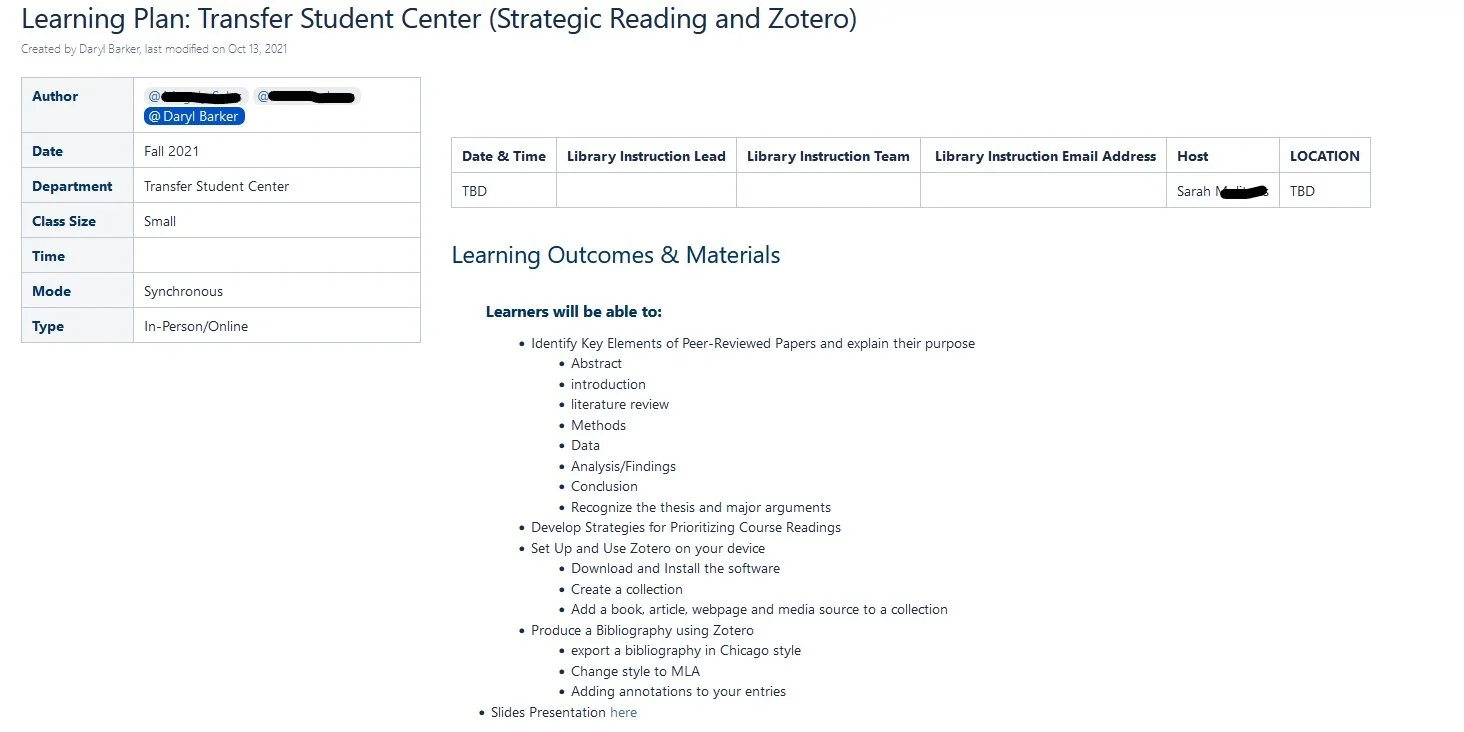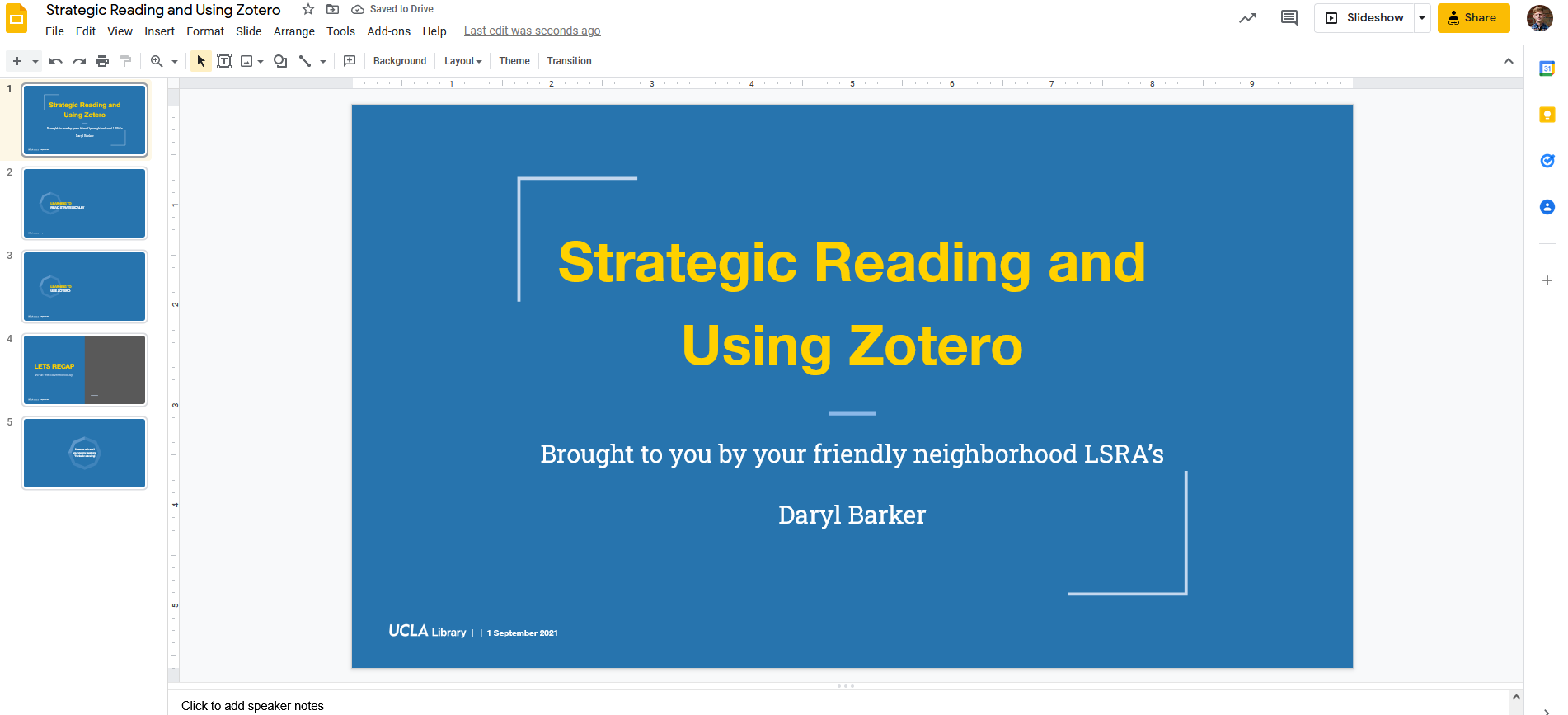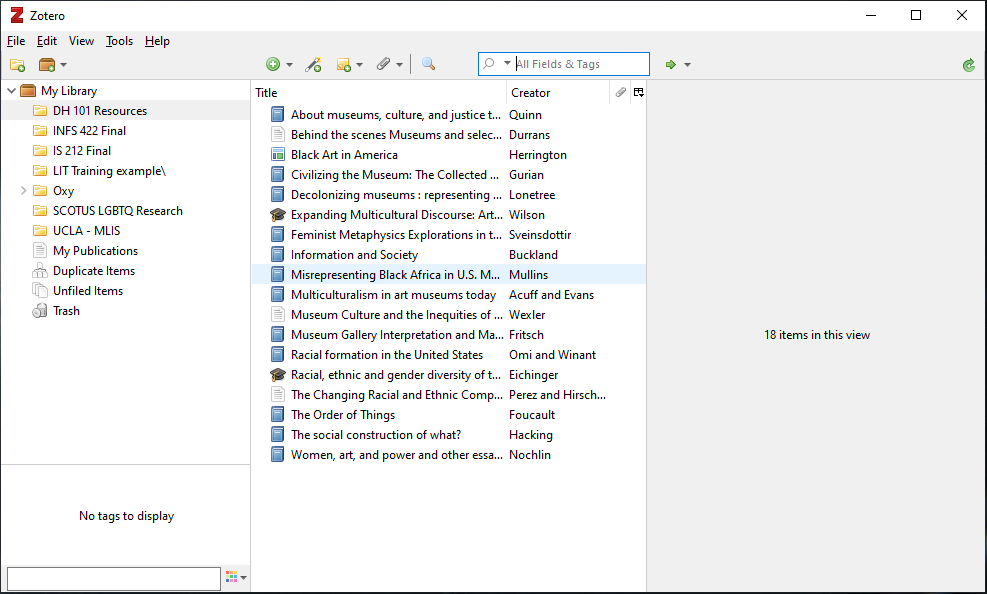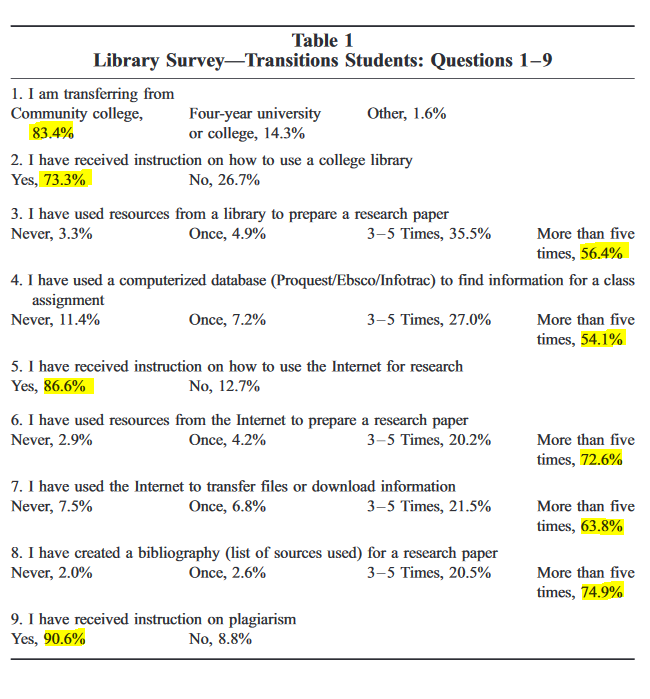Here are some of the planning steps that go into how I develop library instruction…
At UCLA I use Confluence (Project Management/Workflow software) to create the backbone of a library instruction session.
Learning outcomes, developed early on help shape how the rest of the library instruction will come together.
Slides houses a series of template presentations that I will use to build my presentation.
With most library instruction, I tend to focus on a few key takeaways to highlight in the presentation, the real goal is to get students engaged and using their own searches, skills, and interests to drive hands on activity in an instruction session.
I will often use other sites, programs, and materials in a session to be sure students are leaving with a tangible tool to be able to employ in their academic journey.
This instruction session is meant to help students learn how to use a citation management system, in this case Zotero. Through working with the Transfer Student Center I learned that their students regularly request instruction on this program, and in response, we are collaborating between the Transfer Student Center, the Veterans Resource Center and Young Research Library to offer this instruction.
Some data on library based instruction…
Table 1, 2, and 3 reproduce quantitative descriptions of library instruction and some quotes from analyses of library instruction with links for you to read more.
“Learning research and information literacy skills is an incremental process. The positive effects of library instruction, and other interaction with library staff, accumulate over time as students have more interactions.
Library instruction is positively associated with retention and GPA. First-year students who do not attend library instruction are at higher risk of not being retained and having lower GPAs. Not attending a required library instruction class can be used as a risk factor. Conversely, attending library instruction could be used as an intervention.”
How academic librarians understand the need for library instruction in 2 and 4 year institutions differently.
[Original visualization made from data collected in the below published paper]
Roberts, L., Welsh, M., & Dudek, B. (2019). Instruction and Outreach for Transfer Students: A Colorado Case Study. College & Research Libraries, 80(1), 94. doi:https://doi.org/10.5860/crl.80.1.94
Mean GPA with varying levels of library instruction intervention
“Undergraduate students who are not first time in college and who attended a library instruction session at the UNT Libraries were 16.7 percent more likely to see an increase in their GPA.”
Undergraduate students who attended a library instruction session at the UNT Libraries were 34.3 percent more likely to continue the following semester than those who did not.”
A survey of 526 students attending transfer student programming days at Western Washington University provided the above responses. A key takeaway for me, is the level of preparedness that transfer students arrive at a 4 year institution with or stated another way, how effective community college librarians are at institutionalizing literacy instruction.
Sylvia G Tag, A Library Instruction Survey for Transfer Students: Implications for Library Services, The Journal of Academic Librarianship,
Volume 30, Issue 2, 2004, Pages 102-108, ISSN 0099-1333, https://doi.org/10.1016/j.acalib.2004.01.001. (https://www.sciencedirect.com/science/article/pii/S0099133304000023)






